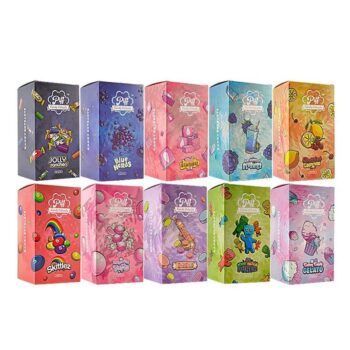-
×
 Piff Candy Extracts 1g Vape Pen
1 × $ 30.00
Piff Candy Extracts 1g Vape Pen
1 × $ 30.00
Total: $ 30.00
Livraison gratuite à partir de $80* | Service client de 8 h à 2 h HNE, 7 jours sur 7
Livraison gratuite à partir de $80* | Service client de 8 h à 2 h HNE, 7 jours sur 7
 Piff Candy Extracts 1g Vape Pen
Piff Candy Extracts 1g Vape Pen
Total: $ 30.00
Medical marijuana, also known as medical cannabis, is cannabis regulated by the state for medical use. Regulations for medical cannabis differ from state to state. Some states have a specific list of health conditions that determine eligibility for medical cannabis, while others leave it to the healthcare provider to decide if it may help a particular health condition.
Most states require both the healthcare provider and the patient to register with the state’s medical cannabis program. This process and the professionals authorized to recommend medical cannabis vary by state.
Medical cannabis products are not regulated by the FDA like pharmaceutical drugs. Instead, they are regulated by the state in which they are sold. There are no approved doses or formulations of medical cannabis for specific health conditions, which means healthcare providers cannot prescribe medical cannabis in the traditional sense. They can only certify that a patient qualifies for it or recommend it as a potential treatment. This lack of standardization can make it challenging for patients to know what products to buy and what dosages to take when visiting a medical cannabis dispensary.
One important note: There is an FDA-approved cannabis-based medication called Epidiolex (cannabidiol). This prescription medication is used to treat rare forms of childhood epilepsy.

Horaires : 8h00 – 2h00
Dernier appel : 1h45
Horaires : 8h00 – 3h00
Dernier appel : 2h45

Commande minimum $40 + frais de livraison $15.
$80 pour livraison gratuite
Commande minimum $60 + frais de livraison $20
$160 pour livraison gratuite

Rayon: Km
OBTENIR DES DIRECTIONS
LOCALISEZ VOTRE GÉOPOSITION
Description
Marijuana refers to the dried flowers, leaves, stems, and seeds from the Cannabis sativa or Cannabis indica plant. These plants contain compounds called cannabinoids, with delta-9-tetrahydrocannabinol (THC) being the most well-known for its psychoactive effects. Another prominent cannabinoid is cannabidiol (CBD), which does not have psychoactive properties but is noted for its potential therapeutic benefits.
INDICA
INDICA
THC : 28%
INDICA
THC : 25%
INDICA
INDICA
INDICA
THC : 35%
INDICA
INDICA
INDICA
INDICA
INDICA
INDICA
INDICA

The medical use of marijuana is one of the primary drivers behind its increasing acceptance. Research has shown that marijuana can be beneficial in managing a variety of medical conditions:
Beyond its medical applications, marijuana is also used recreationally. Many individuals consume marijuana for its relaxing and euphoric effects. It is often used in social settings or as a means of unwinding. The recreational use of marijuana has led to a burgeoning industry, with various products such as edibles, oils, and vaping solutions available to consumers.
Recreational cannabis is commonly associated with “getting high,” but the term “adult use” is now preferred because people use cannabis for various reasons beyond recreation.
Many U.S. adults use cannabis to enhance their overall health and wellness. Some even purchase it at recreational dispensaries for medical reasons. Here are some common reasons people consume cannabis:
It’s possible to use cannabis without experiencing a high. Low doses (1 mg to 2 mg) of THC or products with higher CBD than THC are less likely to cause euphoria. However, everyone’s response to cannabis is different, so finding the right product without feeling intoxicated may require some trial and error.
The quality of medicinal and recreational marijuana can vary, but both types of products come from the same cannabis plants. However, state regulations can differ, which affects the products available at dispensaries. While some states apply the same regulations to both medicinal and recreational cannabis, others have distinct rules.
Some states limit the potency of cannabis products. Typically, medical dispensaries might offer more potent products because they are only accessible with a healthcare professional’s approval.
Cannabis is available in many forms, from smokable plant material to edibles. Medical dispensaries often carry items like capsules and tinctures, while recreational dispensaries might stock more joints and gummies.
Both medical and recreational cannabis products can contain contaminants like pesticides and heavy metals. States regulate the amount of these contaminants, often with stricter standards for medical products to protect those with health conditions who may be more sensitive.
Medical cannabis can only be purchased with approval from a healthcare professional, and many states do not accept out-of-state medical cards. Recreational dispensaries are generally open to anyone over the age of 21, regardless of residency.
While medicinal and recreational marijuana come from the same plants, the regulations regarding potency, dosage forms, contaminants, and accessibility can lead to differences in the products found at medical and recreational dispensaries.
The legal status of marijuana varies significantly around the world and within countries. In recent years, there has been a notable trend towards legalization and decriminalization.
In the United States, marijuana is still classified as a Schedule I controlled substance at the federal level, which means it is considered to have a high potential for abuse and no accepted medical use. However, this federal stance contrasts sharply with the laws in many states. As of now, numerous states have legalized marijuana for medical use, and several have also legalized it for recreational use. States like Colorado, California, and Oregon have seen significant economic benefits from the legalization of marijuana, including increased tax revenues and job creation.
Canada became the second country in the world, after Uruguay, to legalize recreational marijuana nationwide in October 2018. This move has positioned Canada as a leader in the global marijuana industry. The legal framework allows adults to possess and use marijuana, with regulated systems in place for its production and sale. For those in Calgary, there’s even Livraison de mauvaises herbes à Calgary available to make getting your stash more convenient.
In Europe, the legal status of marijuana varies. Some countries, like the Netherlands, have long tolerated the sale and use of marijuana in designated coffee shops. Other countries, such as Portugal and Spain, have decriminalized personal use and possession. Germany is currently in the process of legalizing recreational marijuana, which could set a precedent for other European nations.
Around the world, attitudes towards marijuana are changing. Countries in Latin America, such as Mexico and Colombia, are exploring legalization as a means to combat drug-related violence and boost economic growth. In Asia, the legal landscape remains more restrictive, although countries like Thailand are beginning to explore medical marijuana.
Marijuana can be smoked by rolling dried buds into papers or using a pipe or bong. When lit, the smoke is inhaled and absorbed through the lungs. Effects are felt almost immediately and typically last 2 to 4 hours, although this can vary based on dosage and cannabis potency.
Vaporizers heat marijuana oils or ground buds to release active compounds. The vapor is inhaled and absorbed through the lungs. Effects are usually felt quickly, but it may take up to 30 minutes to fully develop, lasting 2 to 4 hours. High-THC vaping liquids (60% or higher) should be avoided by cannabis novices due to increased health risks.
Dabbing involves heating concentrated THC, known as hash oil or shatter, and inhaling the vapor. These concentrates, often exceeding 60% THC, act quickly and are not recommended for beginners due to their high potency and associated health risks. The duration of effects depends on the amount consumed and cannabis strength.
Cannabis-infused salves, lotions, and balms are applied to the skin and do not cause a high. While they may have therapeutic benefits, the health effects and risks of cannabis topicals are not fully understood yet.
Edible cannabis products, like teas, baked goods, or capsules, take longer to produce effects, sometimes up to 4 hours. The effects can last up to 12 hours, with residual effects lingering up to 24 hours. The duration and intensity depend on the amount consumed and the potency of the cannabis.
Medical marijuana and adult-use cannabis are distinct categories regulated by the state, yet they stem from the same substance. Medical cannabis necessitates a recommendation from a healthcare professional, whereas adult-use cannabis is accessible to individuals aged 21 and older.
Consumers turn to both medical and recreational cannabis for diverse reasons, and in general, regulated products maintain similar standards of safety and quality. However, disparities may exist in the available dosage forms, potencies, and purchase limits between dispensaries catering to each category. Additionally, medical cannabis tends to be more cost-effective as it incurs lower taxation in most instances.